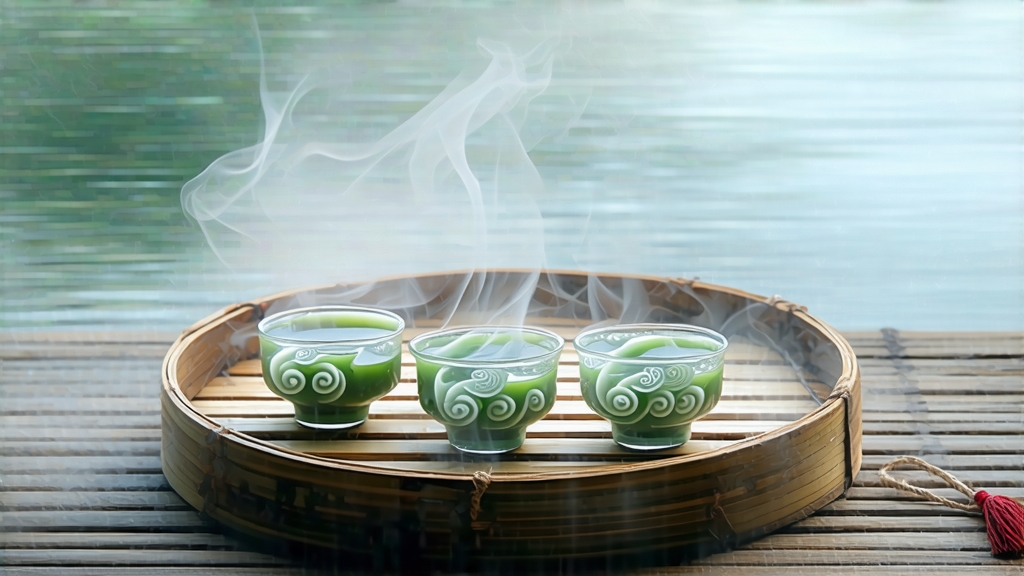
Biluochun, whose name literally means “Green Snail Spring,” is one of China’s ten most celebrated teas, yet it remains a quiet legend outside the Middle Kingdom. Produced only in a micro-zone of hills hugging the eastern shore of Taihu Lake in Jiangsu Province, this tea turns the idea of “green” into an experience that is simultaneously visual, aromatic, and gustatory. To understand Biluochun is to witness how Chinese artisans have, for almost a thousand years, translated soil, mist, fruit trees, and human touch into one perfect spiral.
History: From Poison Antidote to Imperial Tribute
Local chronicles first mention the tea during the late Tang dynasty (around 900 CE) when monks from Biyun Temple noticed that deer sought out certain bushes after eating poisonous plants. The monks brewed the leaves, found the liquor detoxifying, and named the plant “Xia Sha Ren Xiang”—“Scary-fragrant,” because its perfume was almost too intense for the tranquil temple. The Song scholar Su Dongpo, exiled nearby, praised the tea in verse, but it was the Kangxi Emperor who elevated it to fame. In 1699, touring the region, the emperor was handed a cup whose leaves resembled tiny jade snails. Enchanted by the apricot-like aroma, he renamed it Biluochun and decreed it an annual spring tribute. For three centuries the entire crop was couriered to the Forbidden City within three days of plucking, carried on horseback through the Grand Canal’s lock system before the Qingming festival deadline.
Terroir: Where Lake, Mist, and Fruit Intertwine
Authentic Biluochun comes from only two narrow bands: Dongting East Mountain (Dongshan) and Dongting West Mountain (Xishan), actually peninsulas and islands inside the vast freshwater Taihu Lake. The lake’s thermal mass creates nightly fogs that slow photosynthesis, concentrating amino acids—especially L-theanine—while the daytime sun is filtered through apricot, peach, loquat, and plum trees interplanted among the tea bushes. When spring arrives, the fruit trees blossom; their nectar drifts onto the tender tea buds, imprinting a natural fruity note impossible to replicate elsewhere. Soil is a sandy loam rich in shell fragments, a reminder that this region was once a shallow bay; the minerality lends a bright, limpid quality to the infusion.
Cultivars: Two Clones and One Wild Strain
Although any Camellia sinensis var. sinensis plant can be processed in the Biluochun style, only three local cultivars meet the tribute standard.
- Dongshan Xiaoye (Small-leaf): ancient seed-grown bushes with leaves barely 2 cm long, yielding the highest concentration of floral volatiles.
- Fuding Dabai graftings introduced in 1960s: larger buds, higher yield, but require 12 hours withering to tame astringency.
- Wild “Bird’s Tongue” found on cliff edges: tiny, narrow leaves that mimic a sparrow’s tongue; processed quantities rarely exceed 5 kg per spring and are snapped up by Suzhou collectors before the leaves finish firing.
Plucking: One Bud, One Leaf, Before the Oriole Sings
The harvest window opens when the lake’s morning thermometer reads 10 °C for three consecutive days, usually between 15–25 March. Pickers—mostly women who have climbed the same terraces since childhood—break each shoot with the nail of the thumb and middle finger, never pulling, to avoid bruising. The standard is “one bud just unfolding into a single leaf, 1.5–2 cm in length.” Experienced collectors can gather 600 g of fresh leaf in an hour; it takes 55,000 such shoots to make 500 g of finished tea. Baskets are woven from fresh willow; plastic is forbidden because even static electricity can oxidize the edges.
Crafting: The Art of Killing Green in a Wok Shaped Like the Moon
Within 30 minutes of plucking, the leaves are spread under fruit-tree shade for a brief withering—no fans, no machines—just the breeze off Taihu. Next comes kill-green: a 200 °C convex wok, hand-forged from low-carbon steel, its surface polished by decades of tea sap. The master—always titled “Guo Shifu”—tosses 250 g of leaves in a rhythm that resembles calligraphy: a vertical “dot” to shock enzymes, a horizontal “stroke” to drive off steam,